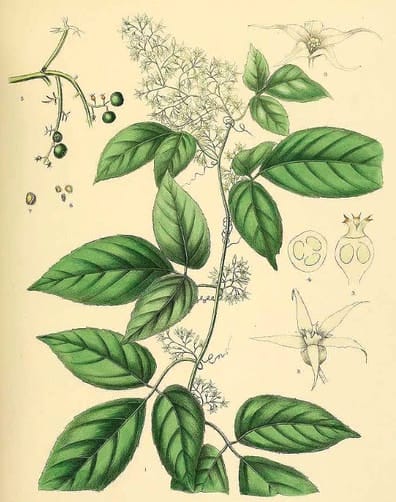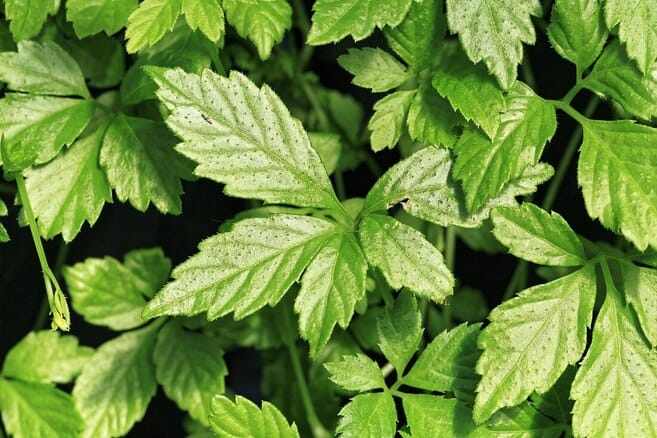Gynostemma, Jiao Gu Lan 绞股蓝
Jiao Gu Lan (TCM) Trimen, H., A hand-book to the flora of Ceylon (1893-1898)
Trimen, H., A hand-book to the flora of Ceylon (1893-1898) Gynostemma pentaphyllum
Gynostemma pentaphyllum(Photo by Ies) (Wikimedia)
Botanical name:
Gynostemma pentaphyllum (G. pedatum)
Parts used:
Herb
Temperature & Taste:
Cool, dry. Sweet, Slightly Bitter
Uses:
1. Benefits Qi:
-Weakness, Fatigue, Debility
-helpful in Altitude sickness
-immuno-suppression in chronic illness including Cancer
2. Clears Heat and Toxin, Relieves Inflammation:
-Chronic Gastroenteritis, Gastro-duodenal Ulcer
-Viral Hepatitis, Herpes
-Septicemia
3. Benefits Liver:
-protects and supports Liver function
-lowers Cholesterol, Atherosclerosis
-lowers Blood Sugar
4. Moistens Lungs, Clears Phlegm:
-Cough, Asthma
5. Externally:
-applied as a paste to Liver spots
Dose:
Infusion: a heaped teaspoonful per cup.
Decoction: 6–12 grams;
Powder: 1–3 grams
Main Combinations:
1. Gastro-duodenal Ulcers:
i. Gynostemma Jiao Gu Lan with Licorice
ii. with high acidity, Gynostemma Jiao Gu Lan with Cuttlefish bone (Hai Piao Xiao)
2. As a Qi tonic in deficiency:
i. Gynostemma Jiao Gu Lan with Chinese Red Dates (Da Zao)
ii. Gynostemma Jiao Gu Lan with Astragalus Huang Qi
3. Herpes or Viral Hepatitis, Gynostemma Jiao Gu Lan with Gentian (Long Dan Cao), Scutellaria Huang Qin
4. Atherosclerosis:
i. Gynostemma Jiao Gu Lan with Curcuma Yu Jin, Salvia Dan Shen
ii. Gynostemma Jiao Gu Lan with Hawthorn (Shan Zha), fresh Ginger
5. Hyperlipiemia:
i. Gynostemma Jiao Gu Lan with Hawthorn (Shan Zha), Lotus seed (Lian Zi)
ii. Gynostemma Jiao Gu Lan with Hawthorn (Shan Zha), Cassia seed (Jue Ming Zi), Rhubarb (Da Huang)
Cautions:
1. Some people may experience fatigue, dizziness, chest congestion, sweating, sore throat, rash and increased Heart rate with use. This is usually transient and stops once the herb is discontinued.
2. May cause Stomach discomfort if taken on an empty Stomach
